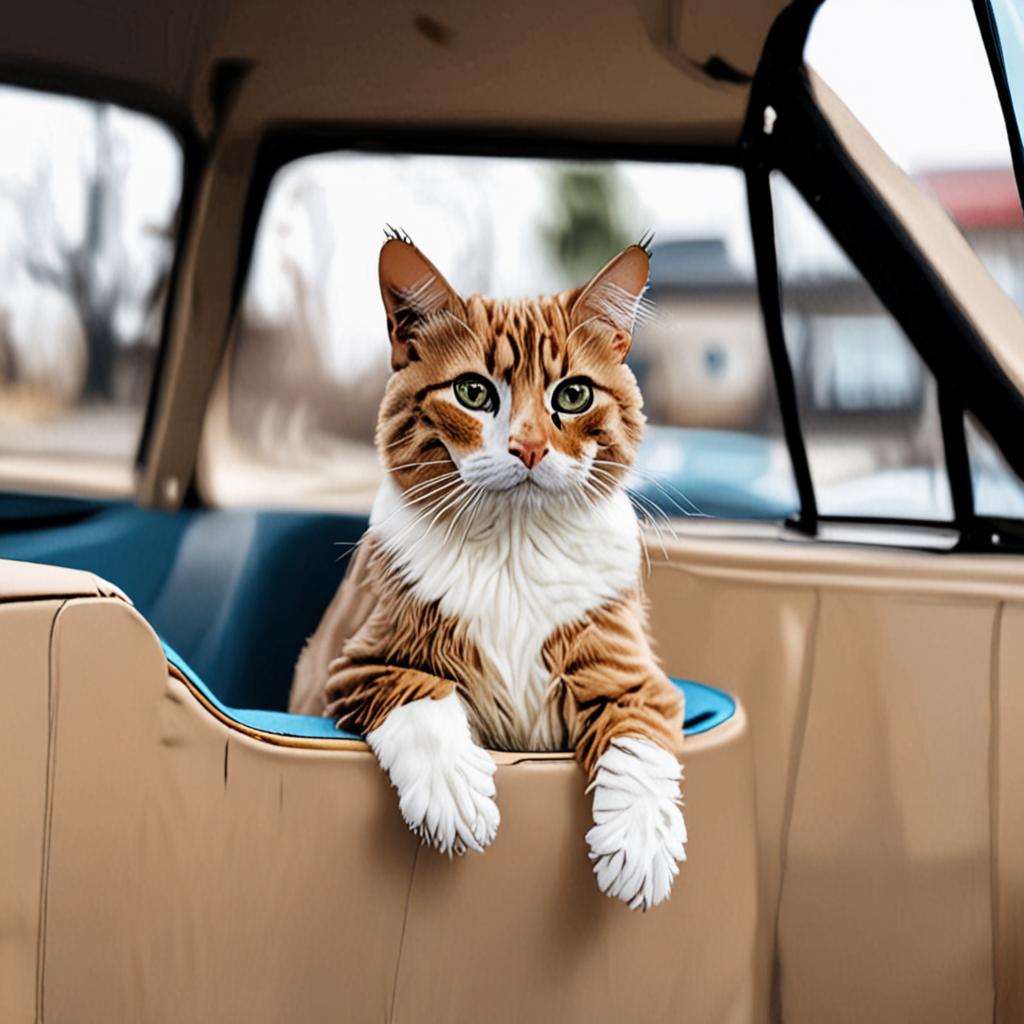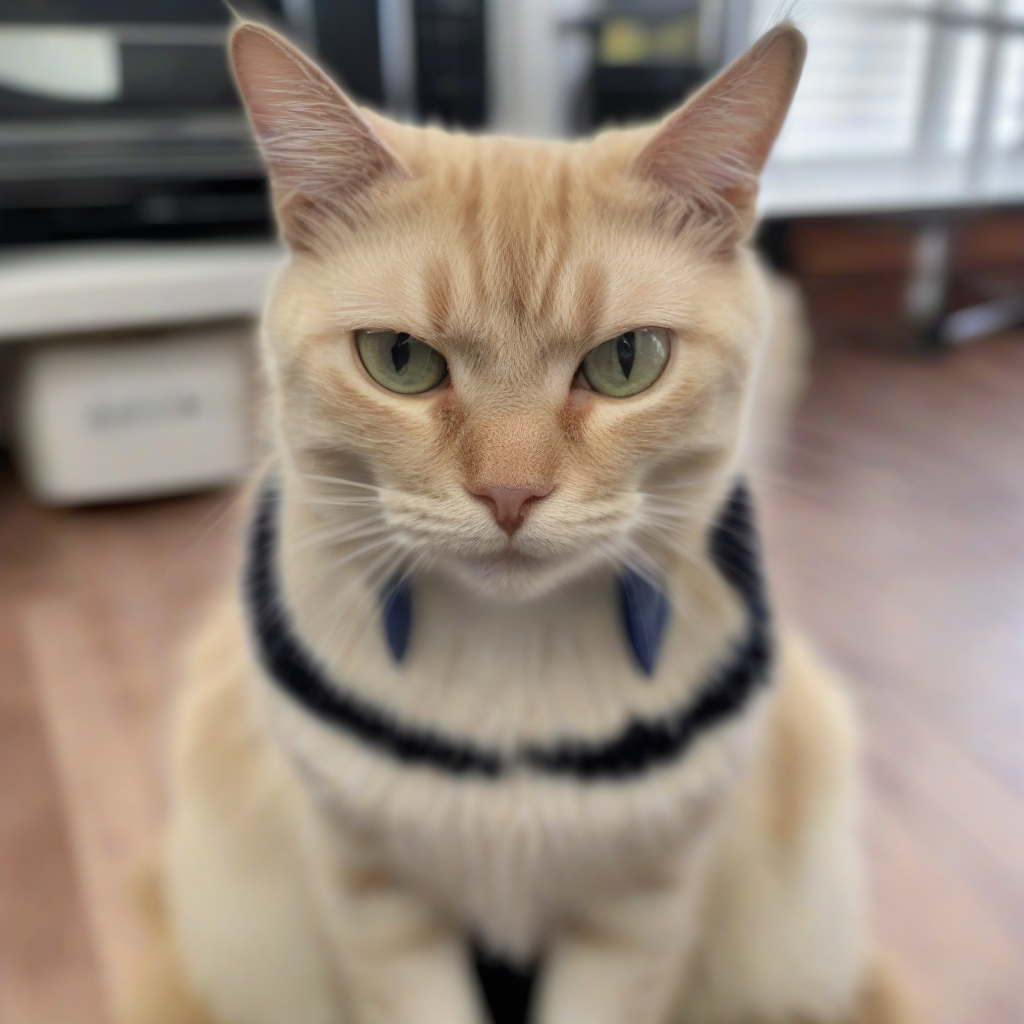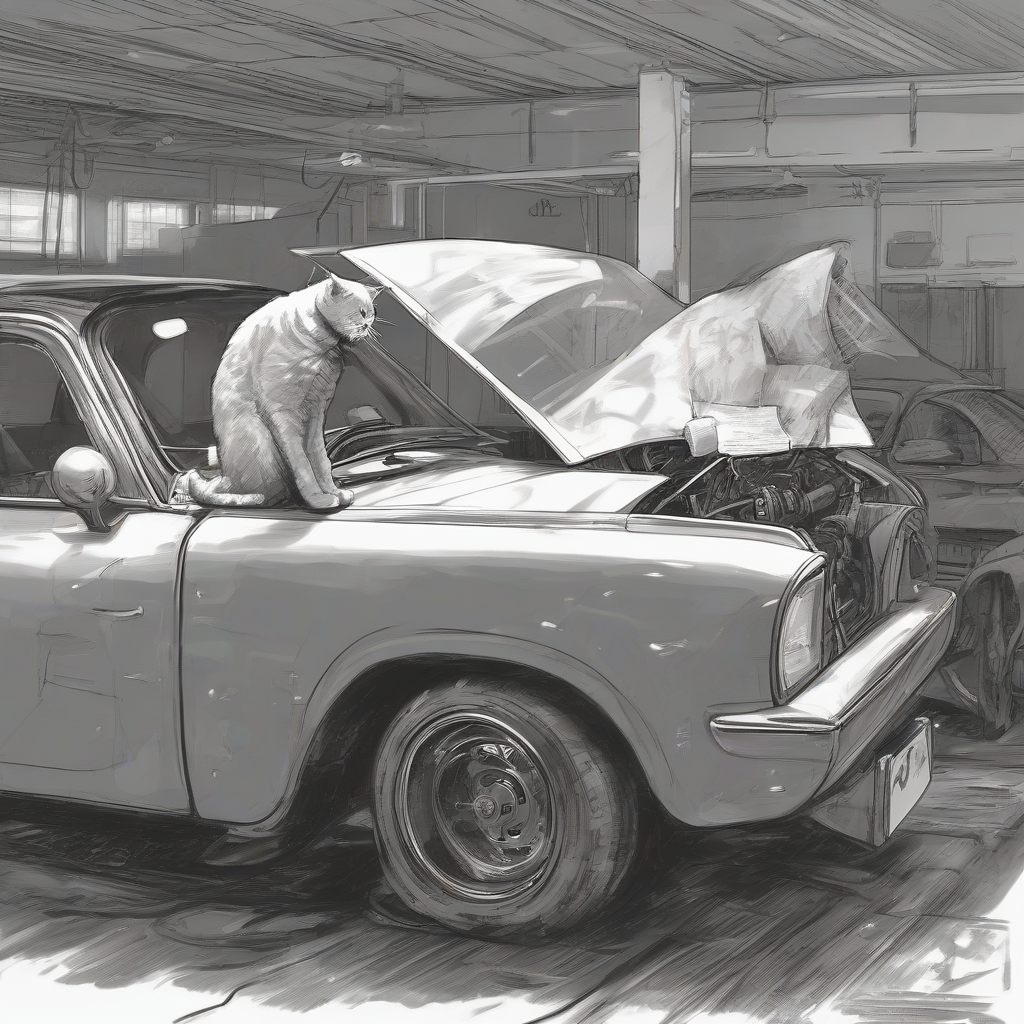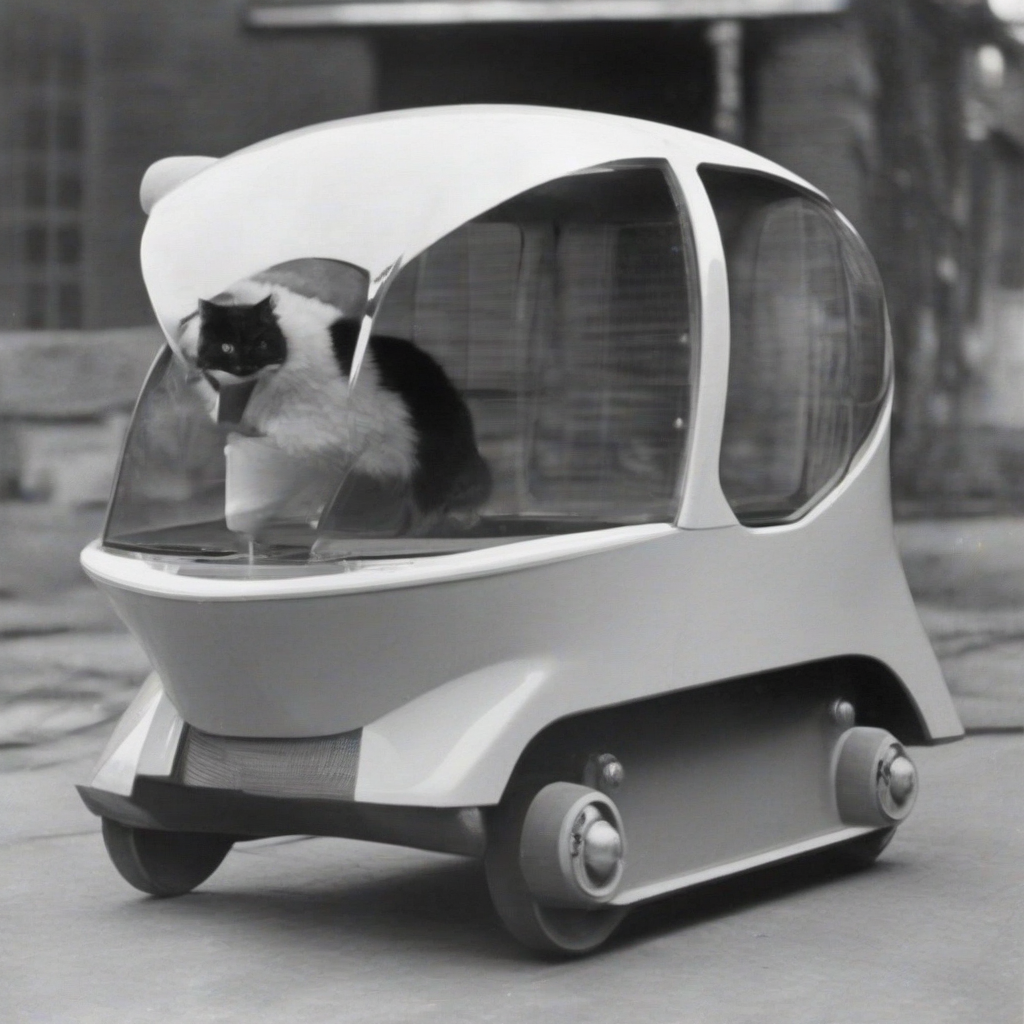Finally, the Cat Became a Car

The year is 2077. Flying cars are commonplace, robot butlers are the norm, and cats… well, cats have finally achieved their ultimate destiny: becoming cars. This wasn't a sudden mutation or a bizarre scientific experiment gone right (or wrong, depending on your perspective). No, this was a meticulously planned, multi-generational project, a testament to feline cunning and unwavering dedication to the pursuit of comfort and effortless transportation.
It all started, as most groundbreaking achievements do, with a single, ambitious tabby named Mittens. Mittens wasn't your average housecat. While her siblings were content with napping in sunbeams and batting at dust bunnies, Mittens harbored a secret ambition: she wanted to be a car. Not just any car, mind you. A luxurious, self-driving, purr-powered limousine, complete with a built-in scratching post and an unlimited supply of tuna-flavored air freshener.

Her initial attempts were… rudimentary. She tried to commandeer a remote-control car, her tiny paws fumbling with the joystick. She attempted to hitch a ride on a Roomba, resulting in a spectacular crash into the potted fern. She even tried to convince the family dog, a lumbering St. Bernard named Barnaby, to carry her around on his back – a venture that ended with a thoroughly disgruntled Barnaby and a slightly bruised Mittens.
Undeterred, Mittens developed a comprehensive plan. She started small, focusing on the key elements of car-like behavior. She perfected the art of sleek, effortless movement, gliding across the floor with the grace of a seasoned Formula One driver. She mastered the subtle art of parallel parking, squeezing herself into the narrowest of spaces with impressive precision. She even began experimenting with different speeds, transitioning seamlessly from a slow, deliberate creep to a sudden, surprising burst of feline-powered velocity.
Her dedication was unwavering. She spent hours studying car mechanics, watching YouTube tutorials on engine repair (mostly the parts with shiny things), and meticulously observing the movements of various vehicles from her perch on the windowsill. She developed a deep understanding of aerodynamics, suspension systems, and the intricacies of tire pressure – all gleaned from countless hours of silent observation and an uncanny ability to eavesdrop on human conversations.

But Mittens needed allies. She assembled a team of equally ambitious felines, each with their own unique skills and expertise. There was Whiskers, the master strategist, renowned for his ability to plan elaborate schemes and manipulate humans into providing resources. There was Patches, the engineering genius, who possessed an uncanny ability to repurpose household items into complex mechanical contraptions. And then there was Jasper, the charismatic leader, whose hypnotic stare could charm even the most skeptical of humans (and squirrels).
Together, they formed the "Purrfect Propulsion Project," a clandestine operation dedicated to achieving their shared goal: transforming felines into fully functional vehicles. They faced numerous setbacks, including a near-fatal encounter with a vacuum cleaner (a harrowing experience that led to the development of a sophisticated anti-vacuum system), and a series of unfortunate incidents involving laser pointers and improperly calibrated robotic arms.
But through it all, their determination never wavered. They refined their designs, perfected their techniques, and relentlessly pursued their ambitious goal. After years of tireless research, development, and countless prototypes (many of which ended up as rather unusual pieces of cat furniture), they finally achieved a breakthrough.

They developed a revolutionary new engine powered by a combination of concentrated catnip and highly refined tuna oil, a propulsion system that was both incredibly efficient and environmentally friendly (the exhaust fumes smelled vaguely of fresh fish). They designed a chassis constructed from recycled cardboard boxes and reinforced with super-strong, self-healing cat hair. And they implemented a cutting-edge self-driving system powered by a network of interconnected feline brains, capable of predicting traffic patterns with astonishing accuracy.
The first cat-car prototype, a sleek, aerodynamic marvel of feline ingenuity, was unveiled to the public with great fanfare. Mittens, naturally, was the first to take it for a spin, gliding through the city streets with effortless grace, her purr resonating throughout the vehicle like a finely tuned engine. The other cats followed suit, each driving their own customized cat-cars, proving to the world that the impossible is merely a matter of feline determination and a healthy dose of tuna.
The impact on society was immediate and profound. Traffic congestion vanished, replaced by a harmonious flow of purring vehicles. Air pollution plummeted, replaced by the refreshing scent of fish-flavored exhaust fumes. And the world, once skeptical, now looked upon cats with a new sense of awe and respect, finally acknowledging the immense power and potential of these enigmatic creatures. The cat, once a mere household pet, had finally reached the pinnacle of automotive achievement, proving that with enough determination, even the most fantastical of dreams can come true. And it all started with one ambitious tabby named Mittens. The legacy of the Purrfect Propulsion Project would live on, forever altering the course of history, one purr at a time.